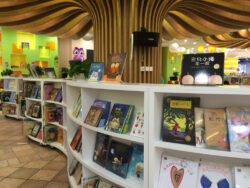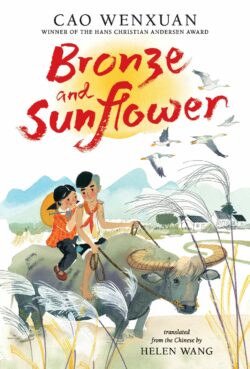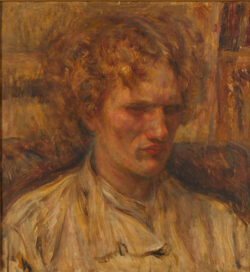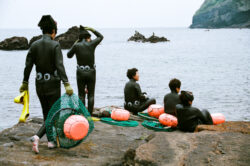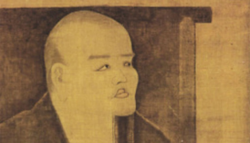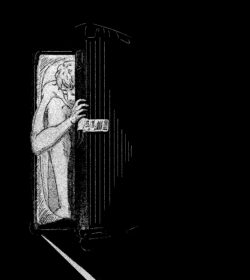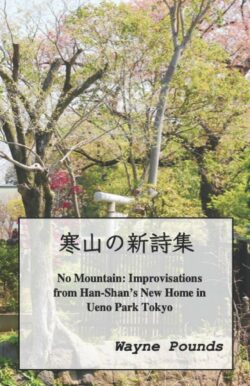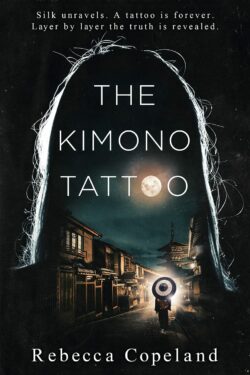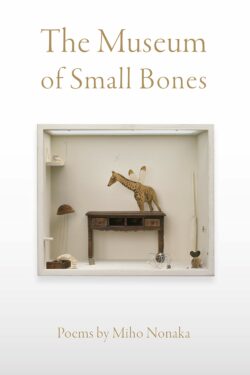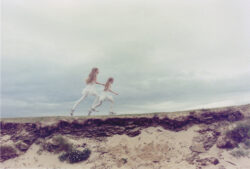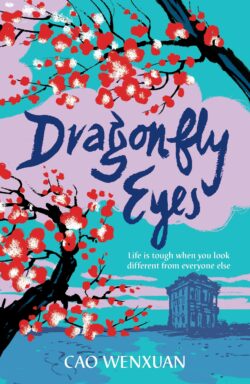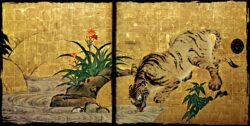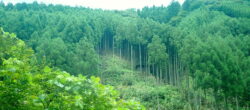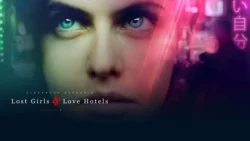Insights from Sixteen Creative Japanese Ceramicists
There are, for those with the requisite sense, currents, energy flows, and dialogues to be discerned in the Japanese garden. Shunmyo Masuno contends that when arranging rocks, for example, one must “converse” with the stone, waiting “until it seems to speak and say where it wants to be put.” According to some of the subjects of Listening to Clay, a similar collaboration, or consulting, takes place between potters and their material. Artist Michiko Ogawa, for example, is very specific on this point, stating that she attempts to, “listen to what the material has to say,” posing the question, “What does the clay want to be?”
Read MorePoetic Eyes
This anthology, VOU,presents striking visual-poetry (often called “vispo,” by practitioners). Visual-poetry combines visual art and poetic sensibility by manipulating images and letterforms. It’s sassy, cheeky, and sometimes three-dimensional. Vispo is fluid, non-semantic expression that’s beyond the poetic conventions of renga, tanka, waka, haiku, or chōka. The VOU anthology show-cases some of Japan’s finest avant-garde artists. Artists in this anthology have earned international reputations, showing and publishing their creations world-wide.
Read MoreShopping for Children’s Books in Asia
For a few years before the pandemic I was lucky enough to travel to Asia a few times—for work, for pleasure and as a translator of Chinese children’s books. Along the way, I developed a habit of doing quick surveys of the children’s books on sale in international airports, cities, and museums. …I was interested to see the situation in countries where there are generally more translated children’s books available than in the UK.
Read MoreAn Activist for Translated Children’s Literature
As Curator of East Asian Money at the British Museum, Helen Wang might seem an unlikely activist for global children’s literature. But September 2021 found her tweeting daily for World Kid Lit Month (@WorldKidLit), an initiative to promote picture books through young adult novels in English translation. She also collaborates with the China Fiction Book Club, Paper Republic, Translated World, the Global Literature in Libraries Initiative, and the Bai Megui Translation Competition, and she co-founded the blog Chinese Books for Young Readers.
Read MorePortrait of Eroshenko
Eroshenko’s experiences tell us of another era in which Japan was emerging as a cosmopolitan hub and in which Europeans might come to Japan to learn, rather than to teach. It was also an era in which contact and exchange were spreading across Asia, with ideas, people and objects all being coming to Japan from across the continent. However, the story also reveals that, whilst to some a life of travel and reliance upon friendship and the goodwill of others was an inspiration, in the eyes of the Japanese state it came to be seen as a threat.
Read MoreMy Father-in-Law the Japanese Radical
The origins of the Narita struggle date back to 1966, when the government announced it would build Japan’s new international gateway in Chiba, 60km from the capital—without consulting the 360 mostly impoverished local people who farmed the land around the Sanrizuka and Shibayama hamlets. The plan, with its whiff of official arrogance and highhandedness, became a lightning rod for discontent in the economic miracle years. Many farmers resisted and supporters poured into the area, fueling a conflict that quickly escalated.
Read MoreHaenyeo – The Sea Women of South Korea
My first encounter with the Haenyeo was through their song. I was hiking in the Seongsan crater on Jeju, an island off the southern coast of South Korea, when I wandered down a winding cliff path to the waterfront. On the rocky beach, an empty seaside restaurant offered seafood to absent crowds. It was obvious that Covid had taken a toll on the local tourism industry. Then the sound of singing came from a shack next to the restaurant, and filled the bay. A few minutes later five women emerged, probably in their late 50s and 60s, wearing brightly-coloured woolen underwear, wetsuit pants, and rubber moccasins. They continued to sing, dance, and laugh while simultaneously helping each other into their remaining diving gear.
Read MoreDogen in a Hammock
Robert Aitken, the late Zen priest of Honolulu’s Diamond Sangha, once wrote that “Drowsy contentment may be a condition close to realization. It is a kind of emptiness, of nondifferentiation, where the ten directions melt: inside and outside become one.”
Read MoreNowhere To Go
She rested her arms, thick and fleshy, on the top of the half-wall, and cupped her face in her hands. Marilou often stood in the balcony at night to gather her thoughts. To take in the breeze, survey the expanse of the property, with its sprawling gardens, tennis courts, and playgrounds. Her room behind the kitchen was a square box with cream-coloured walls. It had barely enough space for a single bed and a cupboard. Twelve years in Singapore as a helper, and she had never really gotten used to the fact that her room here did not have any windows.
Read MoreNo Plan B Dream Villanelle
Whether for a single poem, or a single-author collection of poems, inspiration is offered by different muses. It can come from a place and the history of that place; from a disease and all that living with a disease entails; from travel and the changing vistas that moving from place to place, history to history, presents; from poetic form: the shape that words and lines are given. Recent collections by four Japan-based poets are examples of books that grow from just these seeds.
Read MoreKyoto Thrills
An academic out of a job getting by as a translator in Kyoto is approached by a mysterious woman in a kimono who offers her a remunerative job translating a novel, chapter by chapter, as it is written. The ostensible author of the novel, long thought to be dead, is the disowned scion of a family that has been in the kimono business for generations; the novel describes a crime: the murder of a woman with a full-body tattoo designed to look like a kimono.
Read MorePoet between Reality and Dream
In the museum we find relics or remnants or fragments of stories that are not disowned or abandoned; they are contained, enshrined. As readers of Miho Nonaka’s The Museum of Small Bones, we encounter exhibits of a different, ancient ilk. A native of Tokyo, and educated at Harvard and Columbia, among other universities, Nonaka is a bilingual poet/translator who teaches at Wheaton College in Wheaton, Illinois. In this poetry collection, due to her self-confessed restlessness, she pushes forward by small moves, a time-honored tradition.
Read MoreKYOTOGRAPHIE 2022 “One”
Writing in their preface to the first KG catalogue, Reyboz and Nakanishi averred that “KYOTOGRAPHIE’s intention was always to stage the work in the shrines, temples, machiyas, tea houses and other emblematic locations of the city. But by using scenographers and designers to ensure that the photography and the venues will each work to enhance the other, it was our hope that by engaging the participation of Kyoto’s traditional artisans, a broader spectrum of Kyoto society will feel that this is truly their festival.” The creative fusion we are seeing after ten years seems to confirm their vision.
Read MoreSeeing with Dragonfly Eyes
Novels like Dragonfly Eyes and the acclaimed Cao/Wang title Bronze and Sunflower—also set during the Cultural Revolution, in the countryside—show hopeful struggle amid tragedies playing out in a past so vivid, it could be now. Which is why we need it now. We need its way of storytelling and seeing.
Read MoreJapanese Religion Through the Lens of Water
From KJ 101: As water is essential to all life, both its presence and its absence, its sufficiency, its excess, as well as its paucity, have fundamentally affected, profoundly influenced, and indeed guided the lives of Kyoto people in countless ways… In this article, I address Japanese religion through the lens of water within the context of Kyoto’s geography of surrounding mountains, waterfalls, and rivers, its long history, and its especially high concentration of shrines, temples, and tucked-away religious sites.
Read MoreNanzen-ji
As a special online preview to our ‘Water in Kyoto’ issue, Paul Rossiter’s poem ‘Nanzen-ji’ reveals an example of how vitally water is intertwined with Kyoto’s rich cultural legacy.
Read MoreInk Dreams and the Space of Effusion
Ma is a favorite topic of Kyoto Journal contributors. The two books under review, companions to site-specific exhibitions presented by the Los Angeles County Museum of Art (LACMA), are overflowing with ma in reproductions of 20th-21st artworks created by artists from East Asia and beyond in a variety of media. The two beautifully printed, these large-format full-color volumes include essays by art historians, curators and other scholars, as well as in-depth artists’ biographies and a sense of the dynamic cross-cultural milieux in which they lived.
Read MoreFeeling the trees shivering: endangered environmental knowledge in northern Kyoto
For more than 400 years, villagers in the northern mountains of the Yamashiro basin (an area now incorporated to the modern administrative system of Kyoto city) have developed a special relationship with trees—in particular, with one specific type of tree, the cedar or Cryptomeria japonica, called sugi in Japanese.
Read MoreLost in Tokyo
William Olsson’s adaptation of Catherine Hanrahan’s semi-autobiographical novel Lost Girls & Love Hotels (September 2020) is a visceral inquiry into trauma, survival and the people who help us see the light at the end of the tunnel.
Although the main character, Margaret’s (Alexandra Daddario) background remains elusive, cinematographer Kenji Katori conveys the duality of her frame of mind through shifting surroundings, offering a riveting sensory experience.
An Addict’s Memories
The city Robert Whiting stepped into in 1962 bore little resemblance to the urban utopias of its ambitious future architects and town planners. The capital’s long-suffering residents stoically put up with contaminated rivers, suspect tap water, the extraction of night soil by suction trucks, and legions of rats. In the short interim between the end of the war and the author’s arrival, Tokyo’s hastily created, prefabricated structures were already in an advanced state of decomposition. Surveying the broken, odiferous city, ravenous crime groups, known as yakuza, closed in like hyenas…
Read MoreFinding Her Inner Jewish Soul in Japan
It has been common for several decades for Westerners in Japan to seek enlightenment and spiritual comfort in Buddhism and other Asian religions. It’s a well-traveled road, but Liane Wakabayashi’s path to spirituality in Japan, as depicted in this book, is unique. A native New Yorker and a not-strictly-observant conservative Jew, Liane Grunberg (later Wakabayashi) first came to Japan to cover blockbuster art exhibitions held in department stores for a Conde Nast magazine in 1985 and then again in 1987. She lost her return ticket the second time and ended up staying…
Read More


